Articles & Papers by Stanislav Roudavski
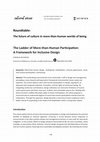
Cultural Science, 2024
The accelerating environmental crises necessitate a shift in design and management, prompting a m... more The accelerating environmental crises necessitate a shift in design and management, prompting a move beyond anthropocentric frameworks that prioritize human needs and expertise. This article explores more-than-human participation in design, arguing for an approach that recognizes expertise, innovation, and the rights of nonhuman beings. By integrating nonhuman contributions, design collectives can overcome limitations of humancentric governance and foster more just, resilient, and sustainable ways to live. Starting with Sherry Arnstein's (1969) influential Ladder of Citizen Participation, this article proposes a structured way to understand degrees of more-than-human participation and discusses the implications. Through this approach, design becomes a more-than-human endeavour with a better chance of responding to the needs of all stakeholders within a living Gaian system.
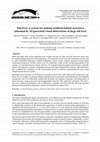
Proceedings of the International Association for Shell and Spatial Structures (IASS) 2024 Symposium: Redefining the Art of Structural Design, 2024
Birds and many other living organisms rely on large old trees for their survival. However, these ... more Birds and many other living organisms rely on large old trees for their survival. However, these trees are rapidly disappearing from many landscapes. The regrowth of such trees takes hundreds of years, and in many disturbed landscapes, wildlife populations cannot persist without temporary human-made replacement structures. In 2022, Mirra et al. [1] conducted a study on the AI-based generation of 3D models, or visual abstractions, of large old trees. An AI agent analysed a dataset of these trees to identify features that appeal to animals and generated forms that approximated these features. The researchers also evaluated the usefulness of the AI-generated forms as artificial replacements for trees using morphological and cost criteria.
Building on this research, we developed our pavilion entry for the IASS 2024 design competition. Our focus was on creating (1) a design strategy to translate the AI-generated visual abstractions into buildable tensegrities, and (2) a fabrication method that facilitates the transport, assembly, and disassembly of these structures using repurposed and biodegradable materials. We named this prototype “FloaTree”. We have constructed prototype tests in Melbourne, Australia, and will build the full-scale pavilion during the annual IASS symposium in Zurich, Switzerland, in August 2024.
Plant Perspectives, 2024
This research explores the idea of plants as designers and discusses approaches that humans can u... more This research explores the idea of plants as designers and discusses approaches that humans can use to support plant’s productive agencies. It argues that plants have unique and valuable capabilities for creating and caring for their environments. Human interventions often overlook or constrain such capabilities. In response, the article proposes to use numerical modelling to better understand plants better while challenging the anthropocentric assumptions that are common in design. It focuses on large old trees in Tasmania as examples of outstanding plant-designers that need more recognition and protection. The article also raises open questions for further research on the ethical, ecological, and aesthetic implications of vegetal design.

Designing More-than-Human Smart Cities: Beyond Sustainability, Towards Cohabitation, 2024
How can we improve the lives of trees, birds, humans, and other beings in increasingly degrading ... more How can we improve the lives of trees, birds, humans, and other beings in increasingly degrading environments? Might direct participation of non-human beings in design be an answer? We believe that such participation is not only possible, but crucial. The idea of trees as designers and birds as assessors might seem jarring, if not preposterous. We hope our readers might suspend their disbelief until the latter stages of the narrative. To tell our story, we refresh several common terms, including community, imagination, innovation, and participation. We derive these updates from scientific evidence, even where the consequences seem counterintuitive. Why do we need these novel understandings? After all, our case study could stand as a technical contribution to restoration ecology without an appeal for more-than-human participation. We shall be pleased to contribute in this way. However, we have another—strategic— ambition. Our overarching motivation is an expansion of moral consideration in human societies. We observe that more and more humans agree to protect the rights of human minorities, future human generations, and even whole systems such as rivers. An aspect of this ethical concern is the idea of helping all beings speak for themselves. ‘Nothing about us without us’ is a slogan that captures it well. This slogan motivates the disability movement and others struggling against injustice. Can it apply to non-human beings, too? Political empowerment of non-humans clashes with preconceptions about communities. However, ingrained habits are not a good reason to reject change, not amid the sixth mass extinction and widespread harms to numerous beings. With this in mind, we strive to give serious consideration to inclusive design that can use non-human knowledge to look into the future. In this chapter, we use data analysis and simulation to make one step forward in this long-term project.
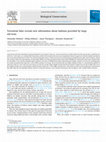
Biological Conservation, 2024
Large old trees have been described as keystone habitats for several species. However, current re... more Large old trees have been described as keystone habitats for several species. However, current research does not fully explain why these species show a preference for such trees. In this study, we combined field observations of birds with terrestrial lidar scans and computational feature-recognition to describe habitats provided by trees at an unprecedented level of detail. We conducted field observations of birds at 62 trees and used parameters including branch angle, branch diameter, branch state (living or dead), and trunk diameter at breast height (DBH) to develop a generalised linear mixed model (GLMM) that could predict which types of branch birds are more likely to visit. We then quantified angles, diameters, and states of 78,006 branch objects representing the complete canopies of 16 trees. By combining these two models we predicted that large trees (>80 cm DBH) contained, on average, 383 m of branches that were highly suitable for birds (i.e., the predicted probability of observing a bird was ≥0.5), which was more than seven times the average length of highly suitable branches provided by medium trees (51-80 cm DBH). Only one of the sampled medium trees contained highly suitable branches. Small trees (<50 cm DBH) contained none. Our analysis provides new knowledge about characteristics that make large old trees disproportionately attractive to birds and presents a novel method of assessment that can apply to other complex habitat structures.
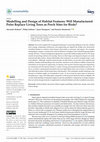
Sustainability, 2023
The need to support life in degraded landscapes is a pressing challenge of our time. Models from ... more The need to support life in degraded landscapes is a pressing challenge of our time. Models from ecology, computing, architecture, and engineering can support the design and construction of habitat features in contexts where human intervention is necessary and urgent. For example, anthropogenic change is causing many arboreal habitats to disappear due to diminishing populations of large old trees. Current management approaches can provide artificial replacements in the shape of poles for perching and boxes for nesting. However, their large-scale long-term impacts are rarely assessed and often unclear. Along with benefits, these structures can result in ecological traps, waste, and pollution. Although computer-aided design and fabrication can provide more sophisticated solutions, limited understanding of tree structures and their use by arboreal wildlife constrain the formulation of clear goals for engineering. In response, this research examines long-term implications at a restoration site that already features a variety of living and manufactured habitat structures. To do so, we build a computational simulation that uses high-fidelity lidar scans of trees in combination with field observations of bird interactions with branches. This simulation models landscape-scale dynamics of habitat supply over hundreds of years. It can account for many types of structures, including trees, snags, and utility poles, irrespective of the processes that led to their availability. We use this understanding of integrated supply to generate quantitative comparisons of design strategies that can inform design decisions in application to arboreal habitats and other modified ecosystems.
Landscape Architecture Australia, 2023
Using more-than-human design as a theoretical framework and artificial habitats for arboreal wild... more Using more-than-human design as a theoretical framework and artificial habitats for arboreal wildlife as a case study, Deep Design Lab explores approaches for better inclusion of nonhuman contributions.
Architect Victoria, 2022
A themed section of the Architect Victoria journal dedicated to more-than-human and interspecies ... more A themed section of the Architect Victoria journal dedicated to more-than-human and interspecies desgin. Edited by Stanislav Roudavski and includes articles from a variety of disciplines including architecture, design, animal studies, biological sciences, geography, philosopy, and others.
Architect Victoria, 2022
We propose that designing for and with nonhuman beings is the most exciting, rewarding, intellect... more We propose that designing for and with nonhuman beings is the most exciting, rewarding, intellectually challenging, and consequential approach to creative practice.
Leonardo, 2022
Urbanization severely reduces opportunities for nonhuman habitation and undermines nonhuman subje... more Urbanization severely reduces opportunities for nonhuman habitation and undermines nonhuman subjectivities, aesthetic experiences, behaviors, traditions, and cultures. In response, humans need to reimagine cities as places for interspecies cohabitation. In this article, a team of architects and ecologists demonstrates that such reimagination depends on the cultural behaviors of multiple species. The authors illustrate the implications of this dependence by designing and discussing nesting structures for the powerful owl (Ninox strenua). The project shows that prosthetic habitats can serve as useful provocation for thinking about interspecies cultures. The authors use this work to propose productive avenues for further research.

Transpositiones, 2022
This article introduces the notion of interspecies cultures and highlights its consequences for t... more This article introduces the notion of interspecies cultures and highlights its consequences for the ethics and practice of design. This discussion is critical because anthropogenic activities reduce the abundance, richness, and diversity of human and nonhuman cultures. Design that aims to address these issues will depend on interspecies cultures that support the flourishing of all organisms. Combining research in architecture and urban ecology, we focus on the design of urban habitat-structures, i.e., any physical objects that support dwelling such as houses or nests. Design of such structures presents practical, theoretical, and ethical challenges. In response, we seek to align design to advancing knowledge of nonhuman cultures and more-than-human justice. We present interspecies design as an approach that incorporates human and nonhuman cultural knowledge in the management of future habitats. We ask: what is an ethically justifiable and practically plausible theoretical framework for interspecies design? In response, we explore the capabilities approach that seeks to pursue justice by supporting forms of wellbeing that human or nonhuman beings are able to achieve. Our central hypothesis is that the capabilities approach to justice can establish goals and evaluative practices for interspecies design. To test this hypothesis, we refer to an ongoing research project that aims to help the powerful owl (Ninox strenua) thrive in Australian cities. To establish possible goals for future interspecies design, we discuss powerful-owl capabilities in past, present, and possible future situations. We then consider the broader relevance of the capabilities approach by examining human-owl cultures in other settings, globally. Our case-study indicates that: 1) owl capabilities offer a useful baseline for future design; 2) cities diminish many owl capabilities but present opportunities for new cultural expressions; and 3) more ambitious design aspirations can support owl wellbeing in cities. The results demonstrate the capabilities approach can inform interspecies design processes, establish more equitable design goals, and set clearer criteria for success. These findings have important implications for researchers and built-environment practitioners who share the goal of supporting multispecies cohabitation in cities.
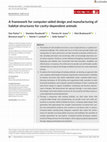
Methods in Ecology and Evolution, 2022
The decline of critical habitat structures, such as large old trees, is a global environmental ch... more The decline of critical habitat structures, such as large old trees, is a global environmental challenge. The cavities that occur in these trees provide shelter and nesting sites for many species but can take centuries to develop. Artificial cavities, including nest boxes and carved logs, offer an increasingly important conservation response. However, current methods of designing, manufacturing and deploying such habitats have constraints that limit innovation, feasibility and effectiveness. In response, this article aims to provide new and broadly useable methods that can improve the design of habitat structures for cavity-dependent animals. To address the shortcomings of existing methods, we develop an approach that uses computer-aided design techniques of generative and parametric modelling to produce structures that satisfy stakeholder needs, computer-aided manufacturing techniques of 3D printing and augmented-reality assembly to build functional prototypes, and computer-assisted techniques of laser scanning and data-driven design to support installation, monitoring and iterative improvement of designs. We demonstrate this approach through a case-study project that designs and instals habitat structures for the powerful owl Ninox strenua, a cavity-dependent and threatened bird. Through a comparison with existing methods, our pilot study shows that computer-aided design and manufacturing can provide novel and useful approaches to develop artificial habitat-structures. Computer-aided design finds geometries that approximate the complex characteristics of natural tree cavities and automatically produces new versions to suit diverse sites or species. Computer-aided manufacturing integrates materials that match the performance of naturally occurring habitat structures and facilitates the assembly of complex geometries by non-experts. Computer-assisted techniques produce precisely fitting and easy-to-instal designs, which support gradual improvement through ongoing prototyping and evaluation. These capabilities highlight how advanced design techniques can improve aspects of artificial habitat-structures through geometric innovation, novel construction techniques and iterative exploration. Significantly, computational approaches can result in designs that can perform well, are easy to construct and instal and are applicable in many situations. Our reusable workflow can aid in the tasks of practical conservation and support ecological research by effectively negotiating the needs of both humans and target species.
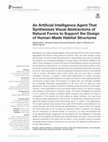
Frontiers in Ecology and Evolution, 2022
Biodiversity is in a state of global collapse. Among the main drivers of this crisis is habitat d... more Biodiversity is in a state of global collapse. Among the main drivers of this crisis is habitat degradation that destroys living spaces for animals, birds, and other species. Design and provision of human-made replacements for natural habitat structures can alleviate this situation. Can emerging knowledge in ecology, design, and artificial intelligence (AI) help? Current strategies to resolve this issue include designing objects that reproduce known features of natural forms. For instance, conservation practitioners seek to mimic the function of rapidly disappearing large old trees by augmenting utility poles with perch structures. Other approaches to restoring degraded ecosystems employ computational tools to capture information about natural forms and use such data to monitor remediation activities. At present, human-made replacements of habitat structures cannot reproduce significant features of complex natural forms while supporting efficient construction at large scales. We propose an AI agent that can synthesise simplified but ecologically meaningful representations of 3D forms that we define as visual abstractions. Previous research used AI to synthesise visual abstractions of 2D images. However, current applications of such techniques neither extend to 3D data nor engage with biological conservation or ecocentric design. This article investigates the potential of AI to support the design of artificial habitat structures and expand the scope of computation in this domain from data analysis to design synthesis. Our case study considers possible replacements of natural trees. The application implements a novel AI agent that designs by placing three-dimensional cubes – or voxels – in the digital space. The AI agent autonomously assesses the quality of the resulting visual abstractions by comparing them with three-dimensional representations of natural trees. We evaluate the forms produced by the AI agent by measuring relative complexity and features that are meaningful for arboreal wildlife. In conclusion, our study demonstrates that AI can generate design suggestions that are aligned with the preferences of arboreal wildlife and can support the development of artificial habitat structures. The bio-informed approach presented in this article can be useful in many situations where incomplete knowledge about complex natural forms can constrain the design and performance of human-made artefacts.
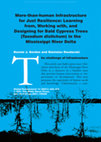
Global Environment, 2021
Humans design infrastructure for human needs, with limited regard for the needs of nonhumans such... more Humans design infrastructure for human needs, with limited regard for the needs of nonhumans such as animals and plants. Humans also often fail to recognise nonhuman lifeforms such as trees as fellow engineers designers, or architects, even though the contribution of trees to ecosystem services is well established and their right to justice ought to be recognised. Studies have shown that flood-control infrastructure near the Mississippi River inadvertently left Southern Louisiana more vulnerable to coastal threats. We examine this characteristic outcome and identify infrastructural injustices in multispecies communities. Based on theories in philosophy and design supported by historical analyses, we defend the proposals to extend 1) the understanding of resilience to include more-than-human communities; and 2) the notion of justice to include non-human stakeholders. The reframing in more-than-human terms is already under way in a variety of disciplines. However, these efforts rarely extend into considerations of practical design and have attracted criticism for insufficient engagement with historical processes and the accumulations of power and responsibility. To illustrate these injustices, we trace the history of bald cypress trees (Taxodium distichum) in the Mississippi River Delta and show how infrastructure impacted the trees. This analysis demonstrates that designs that do not consider the needs of vulnerable stakeholders can cause harm in multispecies communities. In response, we propose that humans can work to improve infrastructural resilience by including humans and nonhumans as collaborators.
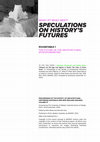
Proceedings of the Society of Architectural Historians Australia and New Zealand: 37, What If? What Next? Speculations on History’s Futures, 2020
How can humanist principles of respect, dignity, and care inform and improve design for non-human... more How can humanist principles of respect, dignity, and care inform and improve design for non-human lifeforms? This paper uses ageing and dying urban trees to understand how architectural, urban, and landscape design respond to nonhuman concerns. It draws on research in plant sciences, environmental history, ethics, environmental management, and urban design to ask: how can more-than-human ethics improve multispecies cohabitation in urban forests? The paper hypothesises that concepts of dignity and respect can underline the capabilities of nonhuman lifeforms and lead to improved designs for multispecies cohabitation. To investigate the implications of this ethical framework, we 1) indicate injustices of current management in relation to natural and cultural histories of trees; 2) outline a conceptual framework that includes large old trees as stakeholders in urban communities; and 3) use this framework in a thought experiment with urban trees in Melbourne, outlining comparative design outcomes. Our findings show that the expansion of dignity to include nonhuman life is possible and plausible. Such an extension can justify and encourage design innovation for multiple species and sites. The resulting design practices will lead to improvements by supporting communities of trees at all stages of their life-cycles, including old age, death, and rebirth. This approach requires substantial shifts in accepted thinking and practices including history, ethics, aesthetics, regulation, and education. Design can play a significant role in the necessary transitions by demonstrating tangible and positive outcomes. In this context, history emerges as an essential tool that can extend societal imagination by situating possible future places in the context of ancient and ongoing geological, evolutionary, ecological, and cultural processes.
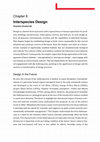
Cambridge Companion to Literature and the Anthropocene, 2021
Design is a distinct form of practice with a typical focus on human aspirations for products, bui... more Design is a distinct form of practice with a typical focus on human aspirations for products, buildings, infrastructure, urban spaces, services and land use. As such, design affects all planetary environments, societies and the capabilities of individual humans. This chapter begins by establishing design as both a force responsible for the current situation and a primary concern of the future. Next, the chapter uses cities as a characteristic example of significantly modified habitats that are simultaneously biological and cultural. The cultures within such habitats combine the behaviours and traditions of many lifeforms. Consequently, the chapter argues that design approaches to the management of future habitats – conceptualised as ‘interspecies design’ – must engage with non-human as well as human cultures. This has implications for theoretical and practical engagements with the Anthropocene, pointing to the significance of design and the need for a transformation of design practices.
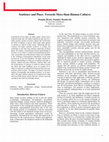
Why Sentience? Proceedings of the 26th International Symposium on Electronic Arts (ISEA 2020), 2020
Expectations for the future can differ greatly. Some await a technical utopia that will support h... more Expectations for the future can differ greatly. Some await a technical utopia that will support harmonious and easy lives. Others predict a global ecosystem collapse that will threaten the future of humans as species. Both camps make appeals to sentience in support of their stories. Addressing this dis-cordance, this paper combines narratives in ecology and technology to ask what roles sentience might play in future places. In response, it hypothesizes that an understanding of sentience as an inclusive, relational and distributed phenomenon can promote more-than-human cultures and contribute to the wellbeing of heterogenous stakeholders on the Earth and beyond. To test this hypothesis, the paper outlines biological understandings of sentience (as applied especially to humans, animals and other lifeforms), contrasts them with the interpretations of sentience in artificial entities (includ-ing robots and smart buildings), gives an example of attempts at sentience in architectural design and discusses how sentience relates to place. The paper's conclusion rejects the dualism of technophilic and biophilic positions. As an alternative , the paper outlines sentience as a foundation for richly local more-than-human cultures that have intrinsic value and can help in the search for preferable futures.
Multispecies Cohabitation and Future Design, 2020
How should humans live with animals and other forms of life? Could responses to this question imp... more How should humans live with animals and other forms of life? Could responses to this question improve the health and wellbeing of the biosphere? This paper argues that design researchers ought to engage nonhuman lifeforms as collaborators: informants and co-designers, or clients and users. Inspired by recent design challenges involving birds, bats and trees, this paper positions emancipatory multispecies cohabitation as a goal that can alleviate ongoing biodiversity losses and human-wildlife conflicts, in cities and beyond. It opens an interdisciplinary conversation by translating emerging scholarship in ethics, politics, and aesthetics to a narrative about desirable more-than-human cultures. This discussion has significant implications and can help to inform regulation, instrumentation, and pedagogies of future design.
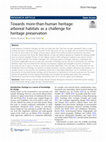
Built Heritage, 2020
Trees belong to humanity's heritage, but they are more than that. Their loss, through catastrophi... more Trees belong to humanity's heritage, but they are more than that. Their loss, through catastrophic fires or under business-as-usual, is devastating to many forms of life. Moved by this fact, we begin with an assertion that heritage can have an active role in the design of future places. Written from within the field of architecture, this article focuses on structures that house life. Habitat features of trees and artificial replacement habitats for arboreal wildlife serve as concrete examples. Designs of such habitats need to reflect behaviours, traditions and cultures of birds, bats, and other animals. Our narrative highlights the nonhuman aspect of heritage, seeking to understand how nonhuman stakeholders can act as users and consumers of heritage and not only as its constituents. Our working definition states that more-than-human heritage encompasses tangible and intangible outcomes of historical processes that are of value to human as well as nonhuman stakeholders. From this basis, the article asks how the established notions of heritage can extend to include nonhuman concerns, artefacts, behaviours and cultures. As a possible answer to this question, the hypothesis tested here is that digital information can (1) contribute to the preservation of more-than-human heritage; and (2) illuminate its characteristics for future study and use. This article assesses the potential of three imaging technologies and considers the resulting data within the conceptual framework of more-than-human heritage, illuminating some of its concrete aspects and challenges.

Impact - Design with All Senses: Design Modelling Symposium 2019, 2020
Anthropogenic degradation of the environment is pervasive and expanding. Human construction activ... more Anthropogenic degradation of the environment is pervasive and expanding. Human construction activities destroy or damage habitats of non-human lifeforms. In many cases, artificial replacement habitats become necessary. However, designing for the needs and preferences of nonhuman lifeforms is challenging. Established workflows for this type of designing do not exist. This paper hypothesises that a multi-scale modelling approach can support inclusive, more-than-human design. The case-study project tests this approach by applying computational modelling to the design of prosthetic habitats for the powerful owl (Ninox strenua). The proposed approach simulates owls' perception of the city based on scientific evidence. The tools include algorithmic mapping, 3D-scanning, generative modelling, digital fabrication and augmented-reality assembly. Outcomes establish techniques for urban-scale planning, site selection, tree-scale fitting, and nest-scale form-making. The findings demonstrate that computational modelling can (1) inform more-than-human design and (2) guide scientific data collection for more inclusive ecosystem management.
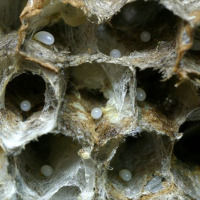
Uploads
Articles & Papers by Stanislav Roudavski
Building on this research, we developed our pavilion entry for the IASS 2024 design competition. Our focus was on creating (1) a design strategy to translate the AI-generated visual abstractions into buildable tensegrities, and (2) a fabrication method that facilitates the transport, assembly, and disassembly of these structures using repurposed and biodegradable materials. We named this prototype “FloaTree”. We have constructed prototype tests in Melbourne, Australia, and will build the full-scale pavilion during the annual IASS symposium in Zurich, Switzerland, in August 2024.
Building on this research, we developed our pavilion entry for the IASS 2024 design competition. Our focus was on creating (1) a design strategy to translate the AI-generated visual abstractions into buildable tensegrities, and (2) a fabrication method that facilitates the transport, assembly, and disassembly of these structures using repurposed and biodegradable materials. We named this prototype “FloaTree”. We have constructed prototype tests in Melbourne, Australia, and will build the full-scale pavilion during the annual IASS symposium in Zurich, Switzerland, in August 2024.
accepted for the 21st International Conference on Computer-Aided Architectural Design Research in Asia (CAADRIA) 2016, held at Melbourne School of Design, University of Melbourne, Australia. They provide a snapshot of leading research in the field by researchers from around the world.
Paper copies can be purchased here: http://www.bookshop.unimelb.edu.au/bookshop/p?8880000451055
However, utilisation of research in design disciplines is still immature and the methodologies of this utilisation remain a matter of controversy and active debate. In particular, the potential of cross-pollination between designing and research requires further clarification. This thesis addresses this need by developing a methodological approach that combines participant observation and investigative designing. Utilising these methodologies, this thesis considers several case-studies, including interactive installations and virtual environments.
Engagement with case-studies through participant observation and investigative designing in this thesis motivates a discussion that reinstates place as the focus of architectural practice. Existing discourse and practice in architecture often assume retrograde, romantic, essentialist and exclusionary understandings of places, for example as singular, bounded and static. By contrast, this thesis highlights an open and flexible vision of places as performances. Considering the possible roles of architectural designing in place-making, it suggests that architects cannot produce ready places but can engender placemaking performances and influence their growth with provocative, open and collaborative creative-design strategies.
Having established the case for distributed, polyphonic, campaigning creativity in place-making, this thesis considers whether design computing can support its performative needs. Commonly, researchers and practitioners in architecture express concerns that design computing can hinder human creativity. By contrast, this thesis demonstrates that design computing can support distributed creativity by staging multiplicious, open, flexible, idea- and insight-generating participatory exchanges. In the process, this thesis considers interactive cinematography and procedural designing as place-making actions. This re-conceptualization demonstrates that design computing can usefully support creative place-making and sometimes be indispensable for its success.
This thesis contributes to knowing by 1) utilising and presenting an unorthodox methodological approach to architectural research; 2) presenting an approach to understanding and making of places novel to the field of architecture; and 3) re-conceptualizing innovative design-computing as an important creative resource for placemaking.
This issue of She Ji: The Journal of Design, Economics, and Innovation seeks to question the capacity of design to specify preferred future states in conditions of environmental collapse.
The guest editors for this issue are Stanislav Roudavski and Paul Walker of the
University of Melbourne.
Responding to this challenge, CAADRIA 2016 seeks to interrogate the notion of continuity and the applicable architectural toolsets in order to map and discover opportunities for innovation.